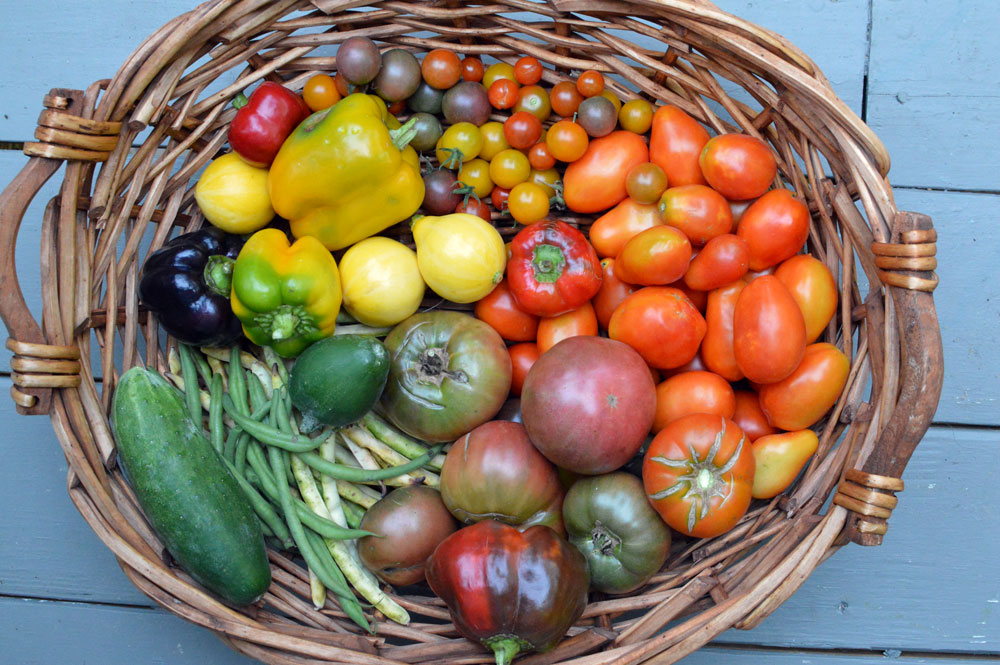Vegetables for a Short Growing Season
My first garden was in US Zone 4a in Idaho. I planted raspberries and tomatoes. I got only a few tomatoes off my plant before we had our first frost! I was devastated but I learned my lesson- Grow varieties that work for your area.
The next year, we moved out to Arkansas Zone 6b. It was quite a change and I didn’t have to worry about picking a variety that matured quickly enough for a cold climate like Idaho.
This post contains affiliate links. Here is the full disclosure.

A few years ago, I sent some of my favorite seeds to my Mother in Law in Idaho and completely forgot to take into account her need for fast maturing vegetables. She reminded me that indeterminate tomatoes don’t work all that well with short seasons. Unless of course they are cherry tomatoes.
Even though in a short, cooler season you miss out on some crops like sweet potatoes and okra, you do get to enjoy some plants and varieties that southern climates don’t. Northern gardens enjoy larger onions and potatoes, and it’s easier to grow broccoli, cauliflower, and celery.
Yes, I can grow those things where I live too, but it is hard! I can barely get a decent harvest before the broccoli and cauliflower go right to seed.
What I’m trying to say is each growing area has its strengths. I hope to give you some plants and varieties that focus on the strengths of a short growing season.

Here is a good list of what types of vegetables you can grow in a northern climate with a short growing season.
Asparagus
Beets
Broccoli
Brussel Sprouts
Bulb Onions
Cabbage
Carrots
Cucumbers
Corn
Dried Beans
Eggplant
Fennel
Garlic (Hard-neck)
Green Beans
Green Onions
Kale
Leeks
Peas
Peppers
Radishes
Summer squash/ Zucchini
Tomatoes
Turnips
White Potatoes
Winter Squash
*IMPORTANT* There are a few vegetables listed above that require fast maturing varieties. You need specific varieties of tomatoes, winter squash, dried beans, eggplant, peppers, corn, and onions for northern, cold climate gardens.

Below you’ll find some recommendations for very fast maturing vegetables of the types stated above. Most of the varieties will work for US Zone 3 or higher.
All of the varieties listed are open pollinated seeds. As a self-reliant gardener, I try to avoid hybrids when I can. It at least gives you the option to save seeds and helps promote more genetic diversity.
Corn
Dried
- Montana Cudu 90 days
- Painted Mountain 85 days
Sweet
- Fisher’s Earliest 70 days
Dried Beans
With dried beans in a cold climate, it can be difficult to get dried beans to fully mature and dry before a frost comes. Even though it’s best to let beans dry on the vine, if a frost is looming, they can be pulled up roots and all and hung indoors to dry.
- Black Turtle 95 days for dried beans. A favorite dried bean in our own garden. I find mine dry out faster than 95 days
- Vermont Cranberry– 90 days for dried beans
Onions
In northern climates, long day onions are the type you want to grow. Long day onions usually store very well and get larger because the more north you are the longer the daylight hours you have.
An important note: onions are usually planted about a month prior to your last frost date. So if you only have a 90 day frost free season and you’re worried you can’t grow any of these, you can! Another important tip with onions is to start them very early indoors. I sow mine from seed indoors 16 weeks before my last frost date.
- New York Early– 95 days. This is a personal favorite of mine.
- Rossa Di Milano– 100 days. My favorite red onion and a super long keeper.
- Purplette– 60 days. Early mini bulb onions
- Evergreen, Hardy White 65 days. Green onion that doesn’t bulb. However, it is very cold tolerant.
Peppers
- Yankee Bell 60 days to green. 80 days to red.
- Sweet Banana – 70 days. Very, very prolific.
A bell pepper that turns red early for colder climates.
Tomatoes
These are the most popular home garden vegetables and it’s a good thing there are options for cold climates! Remember to grow mostly determinate tomatoes as a northern gardener. They set the majority of their fruit in a three week time span.
Here are some great short season varieties.
- Glacier- 55 days
- Black Cherry- 64 days My favorite cherry tomato!
- Cosmonaut Volkov Tomato- 68 days This one is said to produce high yields even in cool conditions.
- Mountain Princess Tomato– 68 days
- A very productive and early slicing variety
- Roma– 65 days If you want to can your tomatoes for winter, Roma is an amazing paste tomato and a heavy producer. A favorite of mine.
- Siberian-58 days This is a 2-4 oz tomato that produces loads of tomatoes very early in the season.
- Sub Arctic Plenty– 42 days The world’s fastest growing heirloom tomato. Haven’t had luck with tomatoes in a very short season? Try this one out!
For a slightly longer season or if you have a greenhouse, try these favorite heirloom slicing tomatoes.
- Black Krim– 80 days
- Brandywine– 80 days
Winter Squash
- Buttercup 95 days. My in-laws in Idaho grow this one. It’s a great substitute for sweet potatoes since you can’t grow them up north. The squash is sweet and has a creamy, smooth texture when cooked.
- Table King Acorn 85 days.
Eggplant
- Black Beauty- 65 days
- Galaxy of Stars– 60 days. Amazing Flavor and early producing

References and Resources:
The Four Season Farm Gardener’s Cookbook. Eliot Coleman and Barbara Damrosch. 2002.
The Year Round Vegetable Gardener. Niki Jabbour. 2011, Storey Publishing.
https://www.extension.uidaho.edu/publishing/pdf/BUL/BUL0863.pdf


